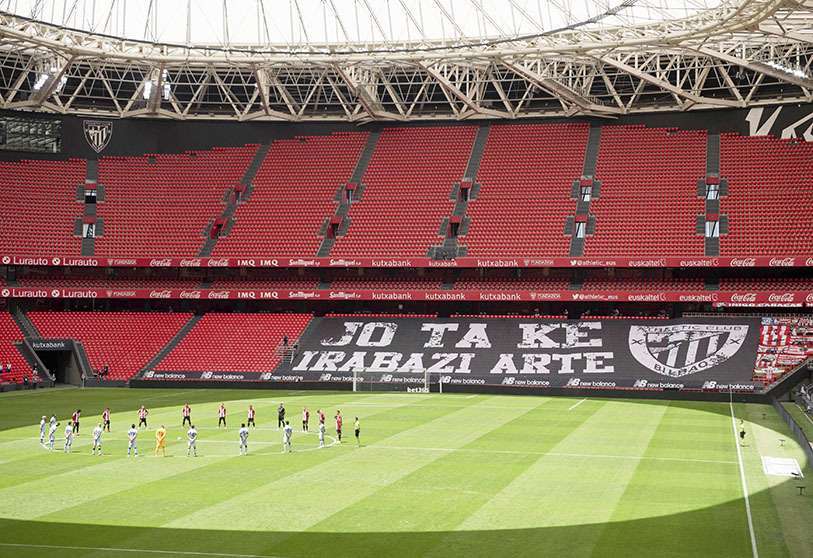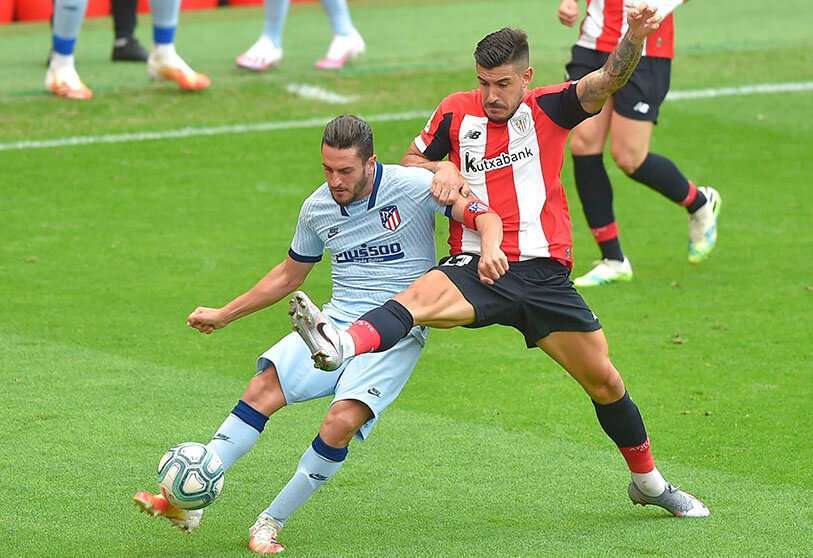Football atmosphere and empty stands

Dear reader:
It has been many years since the coronavirus visited us. The disease you are used to living with arrived in Spain in March 2020. The world stopped in its tracks. And so did football.
The players were confined to their homes for more than 70 days. They proved that they are made of the same stuff as other mortals and that they are vulnerable too. Never, no footballer had gone so long without playing in his career. Without suffering a serious injury, of course. A professional cycle of about 20 years without a break of more than 15 days is the norm.
In the year 2020, the League was already a business that moved thousands of jobs, was part of Spain's GDP and was an important social reality that also gave us prestige outside our borders. More than many politicians. The state of alarm was prolonged and, like all businesses, football moved to return. While shops bought screens and masks, football bought tests and a rigorous plan was drawn up to be able to finish the competition. This way it could send teams to Europe the following season and respect its image commitments in order to receive the money from the contracts.
The league resumed on Wednesday, June 10. A 45-minute Lightning Stroke, suspended by xenophobic chants, was played in the always intolerant stands of Vallecas. People liked this neighbourhood football team, but you may not even remember it because the political extremism of its fans took it away from them. It was an aperitif of the "new normality" that would arrive at football the next day with a whole Sevillian derby.

The ball rolled into the Pizjuán stadium and with it all the machinery that Javier Tebas, the president of LaLiga, had set in motion and had already been criticised in a pre-emptive manner. Just in case.
The stands of all the stadiums were empty. All you could hear was the sound of the players shouting, the coaches' orders and the applause of the members of the benches who were spread around the stands to respect the social distance. Perhaps it was all exaggerated because the football players passed several tests a week and were healthy, but football is an image for society and a game ends up being watched by many people. It wasn't a bad show considering the images of irresponsible people making "botellón", those who like football better than books.

Weeks before, football had returned to Germany. If the Bundesliga is already tedious, the empty stadiums gave us a bitterness that we nevertheless endured for 90 minutes. Anything in order to watch live football and leave behind the replays of matches that people were watching on social networks.
In Spain, LaLiga and Movistar arranged it with ambient sound and stands with virtual fans. There was furious criticism which mistook the situation. Something very typical in Spain, you know. Many accused LaLiga of manipulating and censoring... until they changed the channel and watched football with that original sound of nothing that they liked so much. Others got hooked on virtual stands more like the Megadrive and a stadium-specific FIFA20 ambient sound (atmosphere, they labelled it) that adapted to the local team's attacks and goals. A generous patch that made the lap even nicer.

The critics, they criticized LaLiga. It's been a national sport ever since the TV stations bought up the rights and set up the schedules in a way that made the most profit out of the product they paid millions for. A heresy that the radio stations took it upon themselves to tell the listener in their own way to get him on their side. The typical dirty laundry of the profession that nobody cares about. Precisely after the pandemic, the radio stations returned to their particular war. You will remember that in 2011 they were already stiffened by the canon they wanted to charge them (Audiovisual Law that they did not read, by) for broadcasting football. The radio did not fight and was satisfied to pay a fee for access to the fields instead of having paid something and demanded its fair share. In this return of football after the pandemic, not all radios were able to access the stadiums because the capacity is limited and we all know that there are too many unknown media outlets hovering around the clubs. We'll never know if the measure was to account for 2011 or if it was timely.
By the way, you should know that the criticised measure of the atmosphere and the spectators was reproached for its origin, but there were clubs like Villarreal that dressed the stands of the TV plane with real size photos of their fans. Other clubs like Mallorca played with the ambient sound in their own stadium by raising decibels when their team attacked. And no one complained. Naturally, even the players applauded because it helped them get into the games a little more.

I want to talk to you about Mallorca. Barça won there when it returned. It saved the whistle for announcing an ERTE while trying to spend 100 million on two signings. In Son Moix, an already cold stadium, a spontaneous one appeared. A boy who jumped over a fence almost 3 meters high to have his picture taken with Messi and who then had his minutes of glory in the media. La Liga held its breath. An outside agent skipped all the protocols and got too close to the players.
Real Madrid played at the Alfredo Di Stéfano stadium. That stadium is part of the sports city that in your day bears the name of the man who built it, Florentino Pérez. It used to be called Valdebebas and it had a small field of six thousand spectators where Castilla played, the white branch that had better past than present. It was a brilliant idea of Madrid because it allowed your Paseo de la Castellana to enjoy now a coliseum of the football more typical of the 22nd century. The works accelerated and in Di Stéfano the club felt at home. A field that measures the same as the Bernabeu and where Hazard could do of his own. The Champions had no route in that stadium, but Real Madrid already knew it because the idea of playing it in August and in express format in another city was more interesting.

The hydration break in each part and the five changes were additional regulation changes left by the return of football. The applause of the 20th minute in memory of the victims of the COVID-19 and the minute of silence at the beginning of each game were another victory of this comeback.
The peace that Tebas and Rubiales signed with the mediation of the CSD was better understood when the publicity for the matches was aimed directly at tourism. Although Minister Garzón does not get too upset (even more so) when he says that tourism is not a big deal in Spain, it turns out that it is the main driving force in the summer months and football, a huge window to tell the world that coming to Spain is safe.
In the end, all that remains after those dark months are health care and sports. Some gave their lives to save others. The sportsmen were a reference and football extended its hand to promote Spain. What about those politicians? Nobody remembers them anymore.









